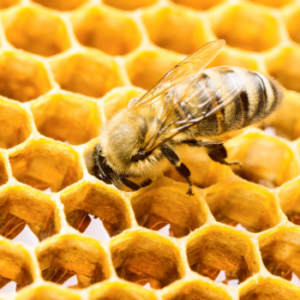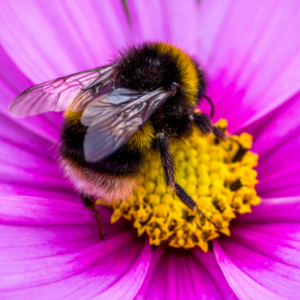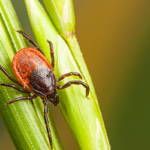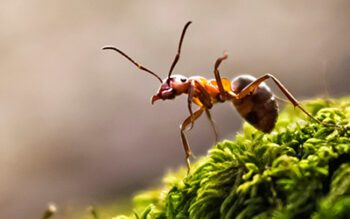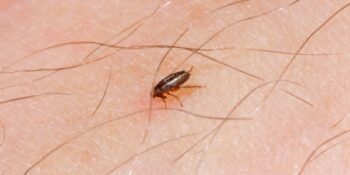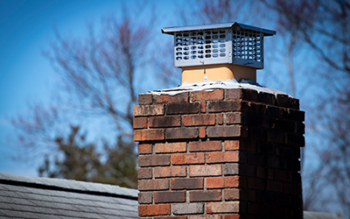
Warm weather is here to stay for a while, meaning the bees of Long Island are appearing more often! Completely avoiding stinging pests like bees this spring and summer may be unlikely, but with the right knowledge of the biology and management of some of the most common bees in NY, you can better protect your home, family, and pets!
Carpenter Bees 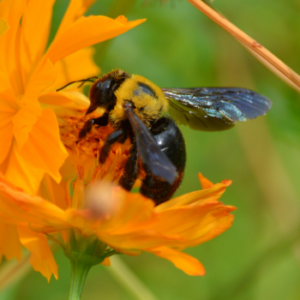
Carpenter bees are one of the common species we see on Long Island this time of year. They’re a larger species, with stocky, oval-shaped bodies that are black and yellow, and are often mistaken for bumblebees (more on those later).
Carpenter bees are a solitary species, meaning they don’t live together with other bees. Instead, individual carpenter bees create tunnels and nesting areas in pieces of softwood such as the wood of sheds, decks, porches, wooden playsets, telephone poles, wooden lawn furniture, and roof eaves.
Unfinished or untreated wood is their favorite type, and while they don’t feed on the wood, they can cause serious damage to your home’s wooden parts. It’s common for carpenter bees to use the same galleries over and over, year after year, weakening the structure they’re invading over time. Since woodpeckers love to chow down on carpenter bee larvae, carpenter bees can also attract another loud, unwanted pest which can cause additional damage to the wood the carpenter bees have laid their larvae.
How to Get Rid of Carpenter Bees
Honey Bees 
Honeybees have oval-shaped, golden-yellow bodies with brown bands, small hairs on their heads and around their eyes, and pollen pouches on their legs which are used to collect pollen from flowering plants. Because of their special pollinator powers, honeybees play a significant role in the production of flowers and crops, which is why honeybee nests must always be handled and relocated by trained bee professionals.
Unlike carpenter bees, honeybees are social insects and live in large colonies, creating their homes off the ground inside trees, under decks or other structures on your property, or in the crevices of rocks. Inside (because sometimes they do make it inside…), honeybees will build nests in chimneys, attics, and walls.
Bumble Bees 
Bumblebees, like honeybees, are social insects. While many bumblebees live in hives, queens will sometimes seek a place to live underground, where they use burrows that mice or other rodents have left behind. They’re large, fuzzy, and usually have black and yellow stripes. Females have stingers and pointed abdomens, whereas males lack stingers and have rounded abdomens.
Bumblebees, like honeybees, are capable of stinging humans, though it’s rare and their stingers lack barbs, meaning they can sting again and again if they feel so inclined. Also, similarly to honeybees, bumblebees can create honey, though it’s not the kind you’re likely to find on a grocery store shelf!
Protect Your Yard from Bees
At Suburban, we understand the ecological importance of bee populations, and always treat clients’ bee concerns with the utmost care. We’ve developed strict company protocols to ensure the protection of pollinators, which is why we don’t treat honeybee hives; instead, we recommend our clients to local beekeepers who are delighted to harvest beehives. This ensures bee threats are removed, and the bees are utilized in a beneficial way.
If you have any questions about the types of bees on Long Island, we’re happy to help! Please call (631) 864-6900.

